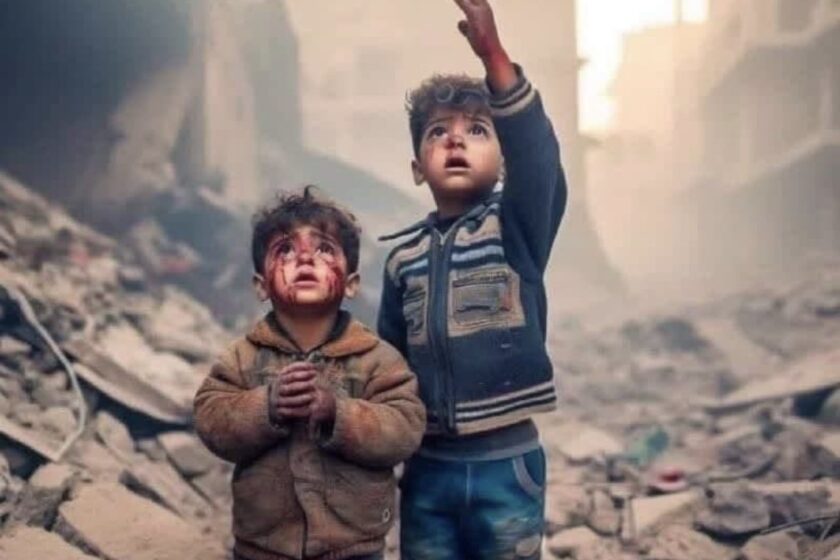By now, most of us have seen the harrowing scenes coming out of Gaza, as the Israeli apartheid pushes ahead with its war crimes. The UN once again has failed to fulfil its advertised role, while international watch dogs and media are mere spectators to an orgy of violence. It leaves one wondering, why did this conflict erupt, why now and who’s the beneficiary? – the devil lies in the detail.
Volga to Red Sea
At first, it is straightforwardly easy to dismiss Western allegations – accusing Putin of backing Hamas. Putin these days enjoys the status of a token boogeyman, white Christian males should be afraid of – while Hamas is evil incarnate that should be “wiped out” – how could they not be working together?
The October 7 crisis appears to bear a direct connection to the ongoing war in Ukraine. This maybe a plausible conflict assessment, as the Russian forces have dug in their positions well inside the Ukrainian territories and are awaiting the European winter to provide a thick cover of snow. During the winter period, the Russian forces will increase bombing of Ukrainian targets, while maintaining their lines of defense. Under these circumstances, opening a new front to bleed the American resources could help the Russian campaign in Ukraine
Winter Winds
The Russian military strategy is focused on diversification of hostilities across regions where western influence needs to be challenged, especially Middle East and Africa, where new fault lines are emerging due to Russian intervention.
On the other hand, Iran, Iraq, Syria and, marginally speaking, Turkey have an axe to grind against the US and Israel for their own individual reasons. These dynamics appear to have fed into a consolidated conflict vortex – creating a “soft strategic space” in Levant region. Over the last 10 years, ISIS and other militant groups have been used by Israel to defunct its regional rivals through systematic destabilisation. Although, it did score a home run for the Israelis, it also contributed to the emergence of the axis of resistance.
Israel’s Afghanistan
Zionist fanatics, led by Netanyahu, find themselves surrounded by an alarming reality. They are no longer the invincible military power they have been led to believe. Due to their own destabilisation project and the invasion of Iraq, not only a “soft strategic space” exists on 3 sides of their borders, but also the region is flooded with advanced and unmarked Russian weaponry.
The asymmetric groups present in the region are no longer poorly trained combatants – decades of warfare has transformed them into highly capable fighting legions, able to operate autonomously, thanks to tactics they learned while fighting NATO forces across the region.
So now we have intent, a cause, a supply chain, human resources and a casus belli – what could it lead to?
The Israeli apartheid has fought wars in 1967 and 73, against state opponents with limited resources and unprofessional military forces with no reliable supply chains. In a symmetric conflict, Israel prevailed because it had the full industrial might of the Western powers behind it.
The coming war however – will look more like “Israel’s Afghanistan” rather than a symmetrical conflict between Israel and its Arab neighbors. The Hamas, Hezbollah, the Houthis and several Levant groups have formed an axis of resistance – ostensibly backed by regional powers.
On a bright day, Israel is facing a 20 year war on its doorstep – which it is neither ready nor equipped to fight, let alone win. The Americans, British and EU know this – however it remains to be seen if they can put an end to it.
Two Front War
Although the American taxpayers have just foot a $14 billion bill to arm the Israeli apartheid, they must also now fund Volodymyr Zelensky of Ukraine, who is facing an existential crisis – come next summer. This comes on the heels of the US government engaging in non-stop borrowing for quantitative easing. A time will come when the US government will have to decide between keeping its own offices funded or funding wars that have no direct or indirect implications for the United States. How long can that go on remains to be seen.
A New Middle East
A regional war has already begun. It will draw in both willing and reluctant countries in the region, whether they like it or not. This war will re-shape the power dynamics in the entire Middle East, with Russia, China, Iran, and Turkey playing a major role. As this conflict is likely to spread – new forces and powers will replace the old guard. It will give an opportunity to underlying political forces to re-emerge and re-define their roles in the region. It is contingent upon the ME countries, as well as the wider Muslim world to decide how that reshaped ME will look like for generations to come.
The clock is ticking….
Author
Shahid Raza serves as Director General – Geopolitics of Command Eleven. His primary expertise is geopolitical conflicts and 4GW/5GW. He brings significant knowledge of military hardware and operations to the table and leads his division from the front, as a mentor and guide.

